Plants That Attract Hummingbirds To Your Gardens
Plants that attract hummingbirds are essential to create a garden that these beautiful birds will love to visit. In this article, we’ll guide you through selecting the right plants and creating an environment that will attract hummingbirds from early spring until fall.

This guide is a comprehensive resource for learning about plants that attract hummingbirds. It suits experienced gardeners and beginners, covering everything from classic favorites to stunning annual blooms. You’ll know how to select, plant, and maintain these hummingbird-friendly plants and practical strategies for enhancing your garden’s appeal and attracting hummingbirds throughout the seasons. With this guide, you can transform your outdoor space into an enchanting haven for these captivating birds.
What Attracts Hummingbirds
Hummingbirds love brightly colored blooms in shades of red and purple that provide the most nectar. The plants on our list fill these requirements and will attract all the brightly colored hummingbirds to your yard.
Beyond planting the flowers we recommend below, a few more things make your yard and garden attractive to hummingbird visitors.
- Create a quiet environment. Hummingbirds are shy, tiny birds. Even the best flowers won’t lure them if the blooms are in a loud or seemingly dangerous climate.
- Plant densely. Hummingbirds choose spots based on the amount of nectar available. Areas abundant in flowering plants attract them, as they provide necessary sustenance.
- Add a hummingbird bath. Hummingbirds often bathe in shallow pools of clean water. Setting up a small birdbath will encourage them to revisit your garden.
Summary of Plants That Attract Hummingbirds
Below is a quick summary of the plants discussed in this article. The subsequent sections provide detailed information about each plant’s characteristics, bloom period, growing conditions, and more.
- Agastache (Hummingbird Mint)
- Beardtongue
- Bee Balm
- Begonia
- Bleeding Heart
- Butterfly Bush
- Cardinal Flower
- Catmint
- Columbine
- Coral Bells
- Foxgloves
- Garden Phlox
- Hardy Fuchsia
- Hollyhocks
- Hosta
- Lilac
- Lupine
- Salvia
- Trumpet Honeysuckle
- Impatiens (Busy Lizzie)
- Petunia
- Zinnia
- Lantana
- Snapdragon
- Flowering Tobacco

Perennial Flowers that Attract Hummingbirds
You can plant many wonderful perennials to attract hummingbirds to the garden. This is not an exhaustive list, but it does contain the most recommended flowers:
Agastache
Agastache, also known as hummingbird mint or anise hyssop, is a beautiful perennial plant admired for its delightful flowers. This plant adds a touch of elegance to any garden landscape while serving as a beacon for hummingbirds.
- Flower Characteristics: Agastache produces large spikes of fragrant dark red/pink/purple tubular flowers, enticing hummingbirds with their abundant nectar.
- Bloom Period: From early summer to early fall.
- Growing Conditions: Agastache thrives in full sun and well-draining soil. It exhibits a semi-drought tolerance, making it a resilient addition to garden beds and borders.
- USDA Growing Zones: Zones 5-9
- Invasive/Poisonous: Agastache is not invasive or poisonous.

Beardtongue
Beardtongue, belonging to the Penstemon genus, is a captivating perennial known for its long blooming period. Its tubular flowers attract hummingbirds, making it a favorite among gardeners.
- Flower Characteristics: Beardtongue showcases an array of colors, including blue, purple, white, pink, and red. Hummingbirds are attracted to tubular flowers that supply them with a consistent source of nectar throughout the season.
- Bloom Period: Penstemon flowers bloom from summer to fall.
- Growing Conditions: Beardtongue is a low-maintenance plant ideal for gardens because it is deer-resistant and drought-tolerant. It thrives in full sun and well-draining soil.
- USDA Growing Zones: 4 to 8
- Invasive/Poisonous: Not invasive or poisonous.

Bee Balm
Bee Balm, also known as Monarda, is a perennial plant with brightly colored, nectar-rich flowers that hummingbirds love.
- Flower Characteristics: Bee Balm blooms boast brightly colored, nectar-rich flowers, with purple and red varieties particularly appealing to hummingbirds. These vibrant blooms provide a plentiful food source for many months during the growing season.
- Bloom Period: With a long blooming period, Bee Balm provides continuous blooms from early summer to late fall.
- Growing Conditions: Bee balm thrives in full sun to partial shade and prefers moist, well-drained soil. It is an excellent choice for gardens with varying light conditions and soil moisture levels.
- USDA Growing Zones: Zones 3-9
- Invasive/Poisonous: Bee Balm can be invasive in certain areas, particularly moist soil. It is not poisonous. Check with your local extension to ensure bee balm is not invasive in your area before planting.
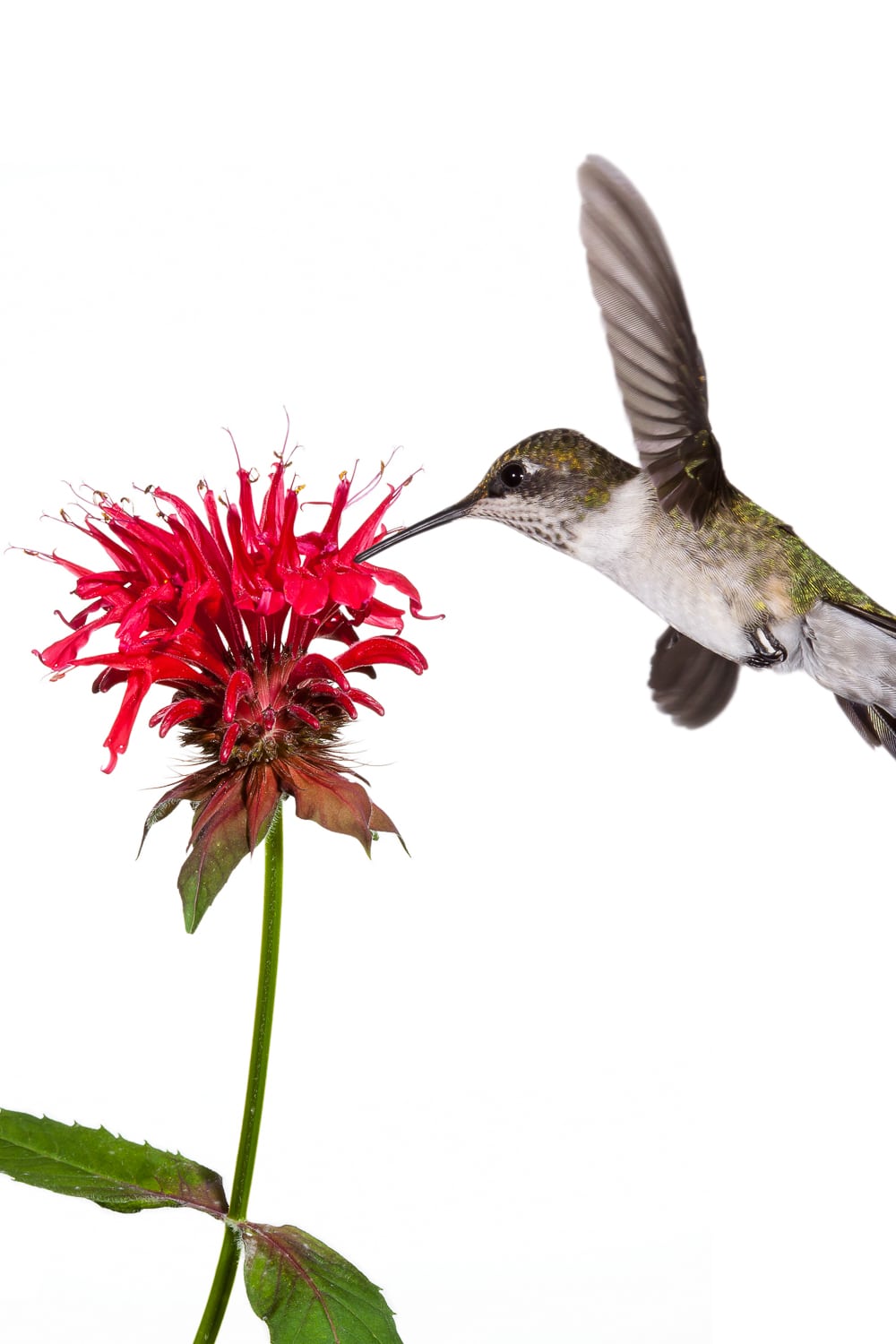
Begonia
Begonia, a genus known for its easy-care nature, is a fantastic choice for attracting hummingbirds to the garden. With masses of red, pink, and white flowers, Begonias provide a colorful spectacle while offering a rich nectar source for hummingbirds.
- Flower Characteristics: Many different types of begonias produce masses of red, pink, and white blooms, with glossy and thick foliage that adds to their visual appeal. These colorful flowers are sure to catch the attention of hummingbirds seeking nectar.
- Bloom Period: Begonias bloom all season.
- Growing Conditions: Begonias thrive in partial shade with moist but well-draining soil. These versatile plants can thrive in a variety of garden settings. These plants perfectly suit shaded areas and make excellent borders or ground cover, especially under open trees.
- USDA Growing Zones: Zones 10 to 11
- Invasive/Poisonous: Begonias are not invasive or poisonous to humans or animals. However, it’s always wise to handle plants carefully and keep them out of reach of children and pets.

Bleeding Heart
Bleeding Heart, also known as Lamprocapnos spectabilis, is a charming perennial cherished for its delicate, heart-shaped flowers that dangle gracefully from arching branches. These unique blooms attract hummingbirds, adding a touch of whimsy to any garden setting.
- Flower Characteristics: Bleeding Heart produces arching branches adorned with heart-shaped flowers in shades of pink and white. The tubular shape of these flowers and their dangling appearance make them irresistible to hummingbirds.
- Bloom Period: From mid-to-late spring to early summer, Bleeding Heart provides a vital food source for hummingbirds during the early months of the growing season.
- Growing Conditions: Thriving in partial shade with well-draining soil, Bleeding Heart is a reliable perennial that adds elegance to woodland gardens, perennial borders, and shaded landscapes.
- USDA Growing Zones: Zones 2 to 9
- Invasive/Poisonous: Bleeding Heart is a noninvasive plant; however, all its parts are toxic if ingested. It’s essential to treat bleeding heart with care and keep it away from children and pets.
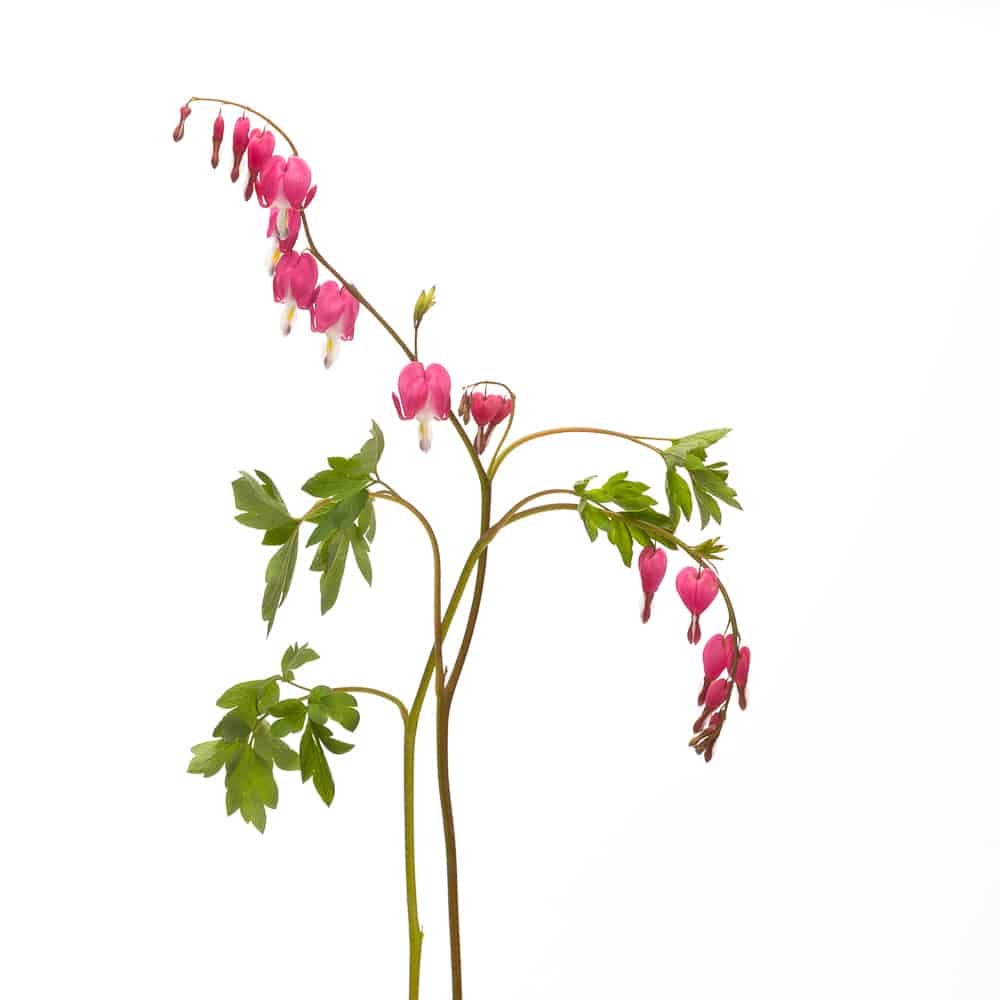
Butterfly Bush
Butterfly Bushes, or Buddleia, is a stunning perennial shrub cherished for its long, pointed, spike-shaped clusters of tiny flowers. These colorful blooms attract hummingbirds and butterflies and create a vibrant display in any garden.
- Flower Characteristics: The Butterfly Bush produces spike-shaped clusters of tiny purple flowers, which attract hummingbirds and butterflies with their nectar.
- Bloom Period: Butterfly Bush provides a continuous nectar source for hummingbirds from mid-summer to early fall.
- Growing Conditions: Thriving in full sun to partial shade with well-draining soil, Butterfly Bush is heat and drought-tolerant, making it an excellent choice for gardens with hot and dry conditions.
- USDA Growing Zones: 5 to 9,
- Invasive/Poisonous: Some species of Butterfly Bush, particularly Buddleia davidii, can be invasive in certain regions. It’s essential to check local regulations before planting. Additionally, the nectar of Butterfly Bush is not toxic, but some people may experience allergic reactions to the pollen.
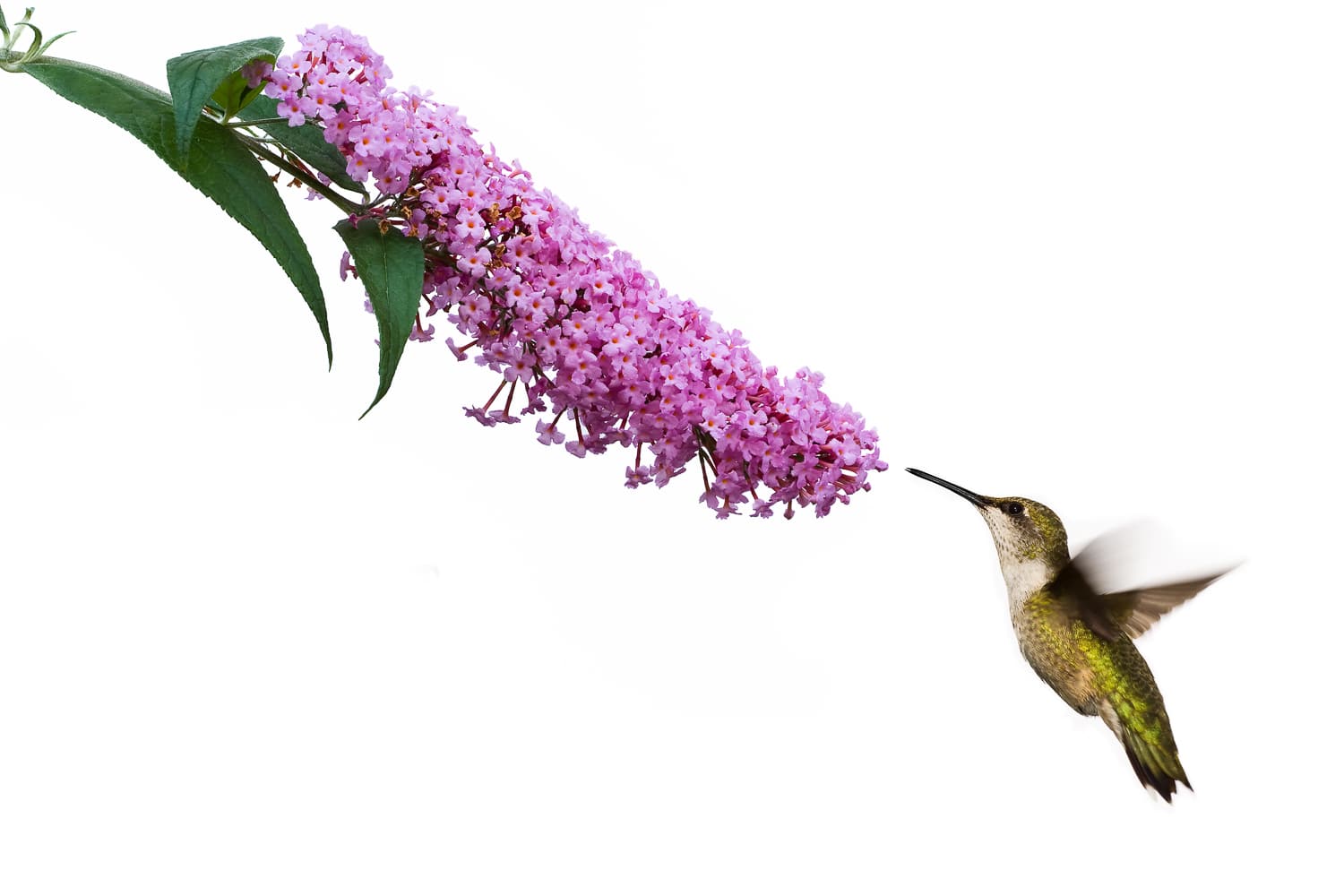
Cardinal Flower
Cardinal Flower, also known as Lobelia cardinalis, is a striking perennial plant with its tall spike-like stems and bright tubular red flowers. These vibrant blooms attract hummingbirds, making Cardinal Flower a must-have for any hummingbird garden.
- Flower Characteristics: Cardinal Flower produces tall spike-like stems adorned with bright tubular red flowers, which serve as a rich source of nectar for hummingbirds. The vivid color and shape of the flowers make them particularly appealing to these feathered visitors.
- Bloom Period: From mid-summer to early fall
- Growing Conditions: Cardinal flowers thrive in full sun to partial shade in moist, organic-rich soils. Cardinal flowers are an excellent choice for gardeners looking to attract hummingbirds to damp or waterlogged areas.
- USDA Growing Zones: Zones 3 to 9
- Invasive/Poisonous: Cardinal Flowers are not invasive. However, all parts of the plant are toxic if ingested, so it’s essential to handle Them with care and keep them away from children and pets.

Catmint
Catmint, a perennial plant in the Nepeta genus, is known for its gray-green foliage and blue/purple flowers that attract hummingbirds.
- Flower Characteristics: Catmint produces long-lasting spikes of tubular blue/purple flowers that are abundant and continuously bloom from late spring to mid-summer. The nectar-rich flowers are highly attractive to hummingbirds, bees, and butterflies.
- Bloom Period: Catmint blooms from late spring to mid-summer.
- Growing Conditions: Thriving in full sun and well-draining soil, Catmint is a fast-growing perennial that exhibits remarkable deer resistance and few pest or disease problems. It’s an excellent choice for gardeners seeking low-maintenance plants.
- USDA Growing Zones: 4 to 8
- Invasive/Poisonous: Catmint is not considered invasive. However, it may spread quickly in the garden, so regular maintenance may be necessary to keep it in check. It is not poisonous.

Columbine
Columbine, also known as Aquilegia, is a charming perennial plant admired for its delicate and colorful flowers. With blooms in various colors ranging from red, orange, yellow, blue, purple, white, and pink, Columbine is another favorite of hummingbirds, providing them with a vital food source in early spring.
- Flower Characteristics: Columbine blooms in a wide range of colors, each adorned with tubular-shaped flowers that attract hummingbirds. The flowers’ vibrant colors and unique shape make Columbine a stand out in any garden.
- Bloom Period: Columbine blooms from spring until early summer.
- Growing Conditions: Columbine thrives in partial shade with well-draining, organic-rich soil. It’s perfect for early spring gardens, perennial beds, borders, and shade gardens. It’s a versatile plant that can adapt to various garden settings.
- USDA Growing Zones: Zones 3 to 8
- Invasive/Poisonous: Columbine is not classified as an invasive plant, but it tends to spread its seeds by itself easily. Additionally, all parts of the plant are poisonous if ingested, so it’s essential to handle Columbine carefully and keep it away from children and pets.
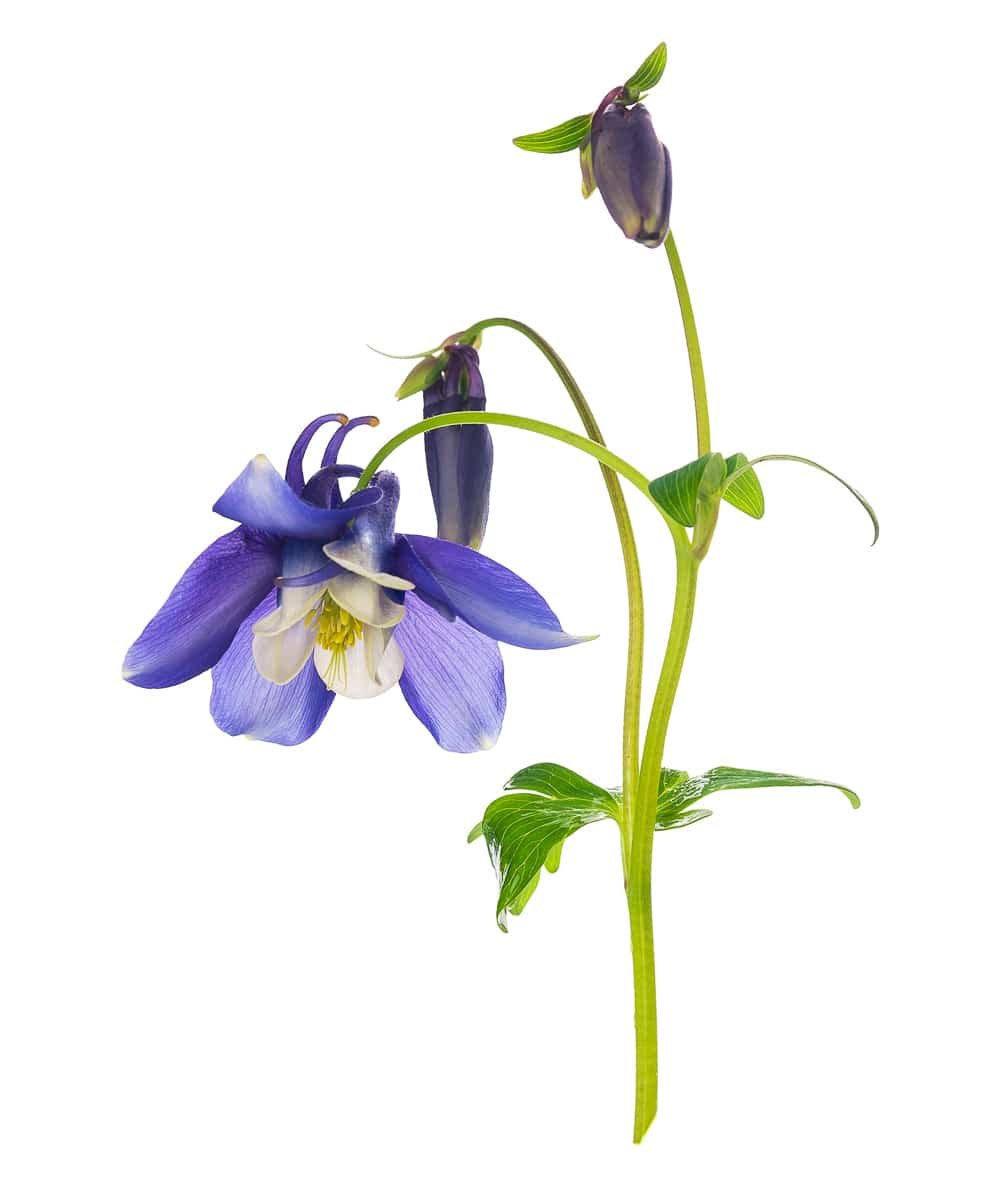
Coral Bells
Coral Bells, or Heuchera, are prized for their brightly colored foliage and delicate bell-shaped flowers. With foliage in shades of purple, pink, and orange, and clustered bell-shaped flowers, Coral Bells add a pop of color to any garden while attracting hummingbirds with their nectar-rich blooms.
- Flower Characteristics: Coral Bells produce stalks of clustered small bell-shaped flowers, typically in shades of white or pink. While the flowers may not be as showy as the foliage, they still provide a valuable nectar source for hummingbirds.
- Bloom Period: Coral Bells bloom from late spring to early summer.
- Growing Conditions: Coral bells thrive in partial shade to full sun and well-draining soil. They are versatile plants that can adapt to various garden conditions. They are perfect for ground cover, erosion control, or container gardening.
- USDA Growing Zones: Zones 3 to 9
- Invasive/Poisonous: Coral Bells are generally non-invasive and safe for humans and pets. It is important to exercise caution around children and pets when handling certain varieties, as they may be mildly toxic if ingested.
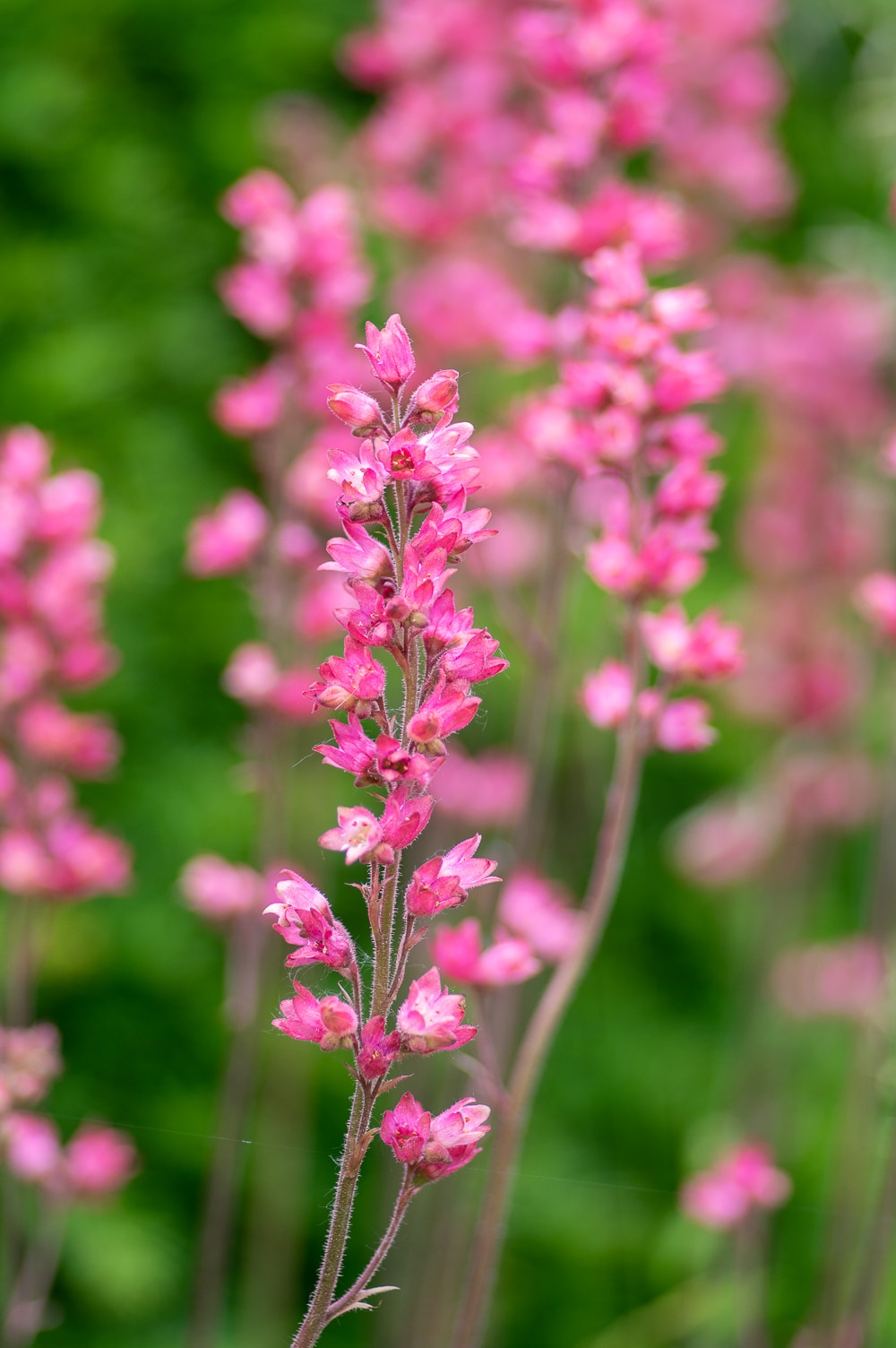
Fox Gloves
Foxgloves, or Digitalis, are tall biennial plants known for their striking tubular bell-shaped flowers. With blooms in various colors, including pink, purple, red, white, and yellow, Foxgloves are a favorite of hummingbirds, offering abundant nectar in their showy flowers.
- Flower Characteristics: Foxgloves produce tubular bell-shaped flowers in various colors, making them highly attractive to hummingbirds seeking nectar. The tall spikes of flowers provide a prominent display in the garden.
- Bloom Period: Foxgloves typically bloom in the second year, offering flowers from late spring to early summer.
- Growing Conditions: Foxgloves thrive in partial shade to full sun and rich, well-draining soil. Once established, They prefer moist conditions but can tolerate some drought. They are excellent for adding vertical interest to garden beds or borders.
- USDA Growing Zones: 4 to 10
- Invasive/Poisonous: Foxgloves are not invasive but can self-seed readily in the garden. Additionally, all parts of the plant are highly toxic if ingested, so caution should be exercised, especially around children and pets.
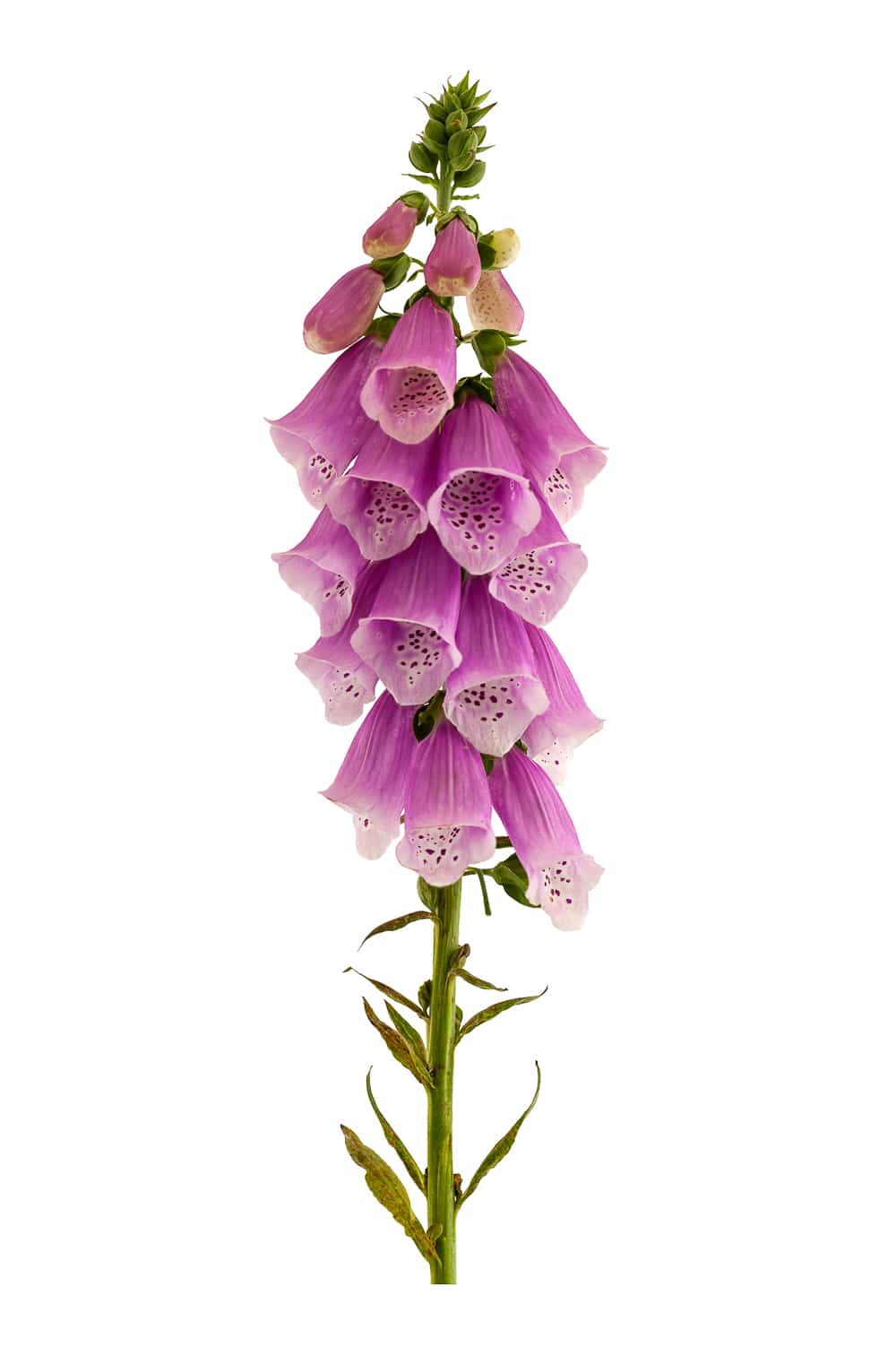
Garden Phlox
Garden Phlox, or Phlox paniculata, is a perennial with vibrant blooms and gentle fragrance. Its star-shaped flowers in exceptionally vibrant colors attract hummingbirds and provide them with a rich source of nectar during summer.
- Flower Characteristics: Garden Phlox produces clusters of star-shaped flowers in vibrant colors, including pink, purple, white, and red. The colorful blooms attract hummingbirds, adding color to the garden.
- Bloom Period: Garden Phlox blooms from mid-summer to early fall, offering a long-lasting nectar source for hummingbirds during the warmer months.
- Growing Conditions: Garden Phlox thrives in full sun to partial shade and well-draining soil. Once established, It prefers moist conditions but can tolerate periods of drought. It’s an excellent choice for adding color to perennial borders or cottage-style gardens.
- USDA Growing Zones: 4 to 8
- Invasive/Poisonous: Garden Phlox is not considered invasive, and it is generally safe for humans and pets. However, some people may experience mild skin irritation from handling the plant. Additionally, while the flowers are not toxic, ingestion may cause gastrointestinal discomfort.
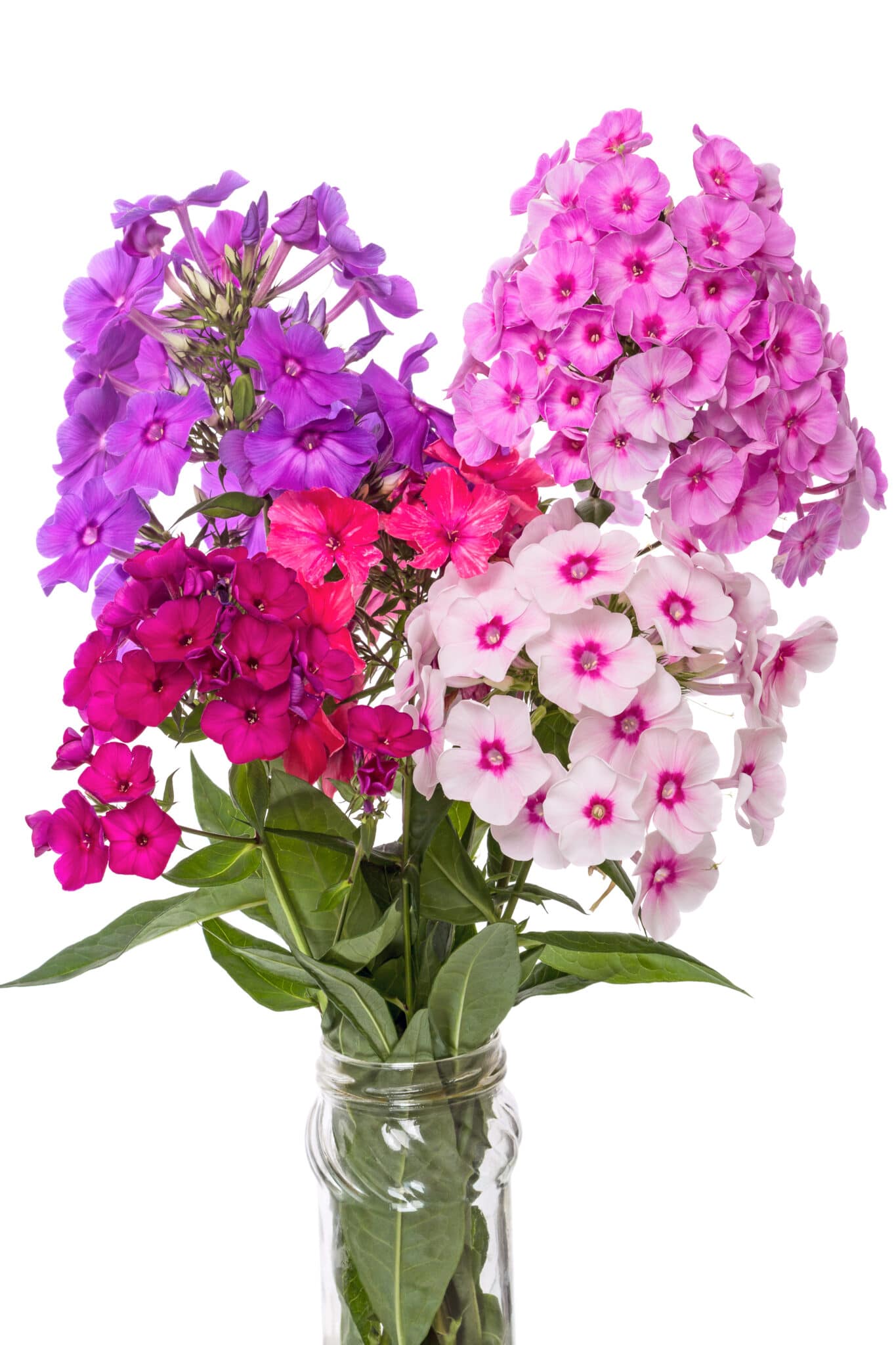
Hardy Fuchsia
Hardy Fuchsia, also known as Fuchsia magellanica, is a graceful shrub renowned for its stunning clusters of purple and hot pink flowers. With flowers that hang and drape elegantly, Hardy Fuchsia attracts hummingbirds and other pollinators, creating a captivating display in any garden.
- Flower Characteristics: Hardy Fuchsia produces clusters of purple and hot pink flowers along the tips of the plant’s branches, creating a stunning visual spectacle. The pendulous flowers are highly attractive to hummingbirds, bees, and butterflies.
- Bloom Period: Hardy Fuchsia blooms from late spring to early fall, offering a continuous source of nectar for hummingbirds and other pollinators throughout the growing season.
- Growing Conditions: Thriving in partial to full shade and well-draining soil with plenty of organic matter, Hardy Fuchsia prefers moist conditions but can tolerate some drought once established. It’s an excellent choice for woodland gardens or shaded landscapes.
- USDA Growing Zones: 7 to 10
- Invasive/Poisonous: Hardy Fuchsia is generally safe for humans and pets and is not considered invasive. However, it may spread readily if not properly controlled. Additionally, while the flowers are not toxic, ingestion may cause mild gastrointestinal discomfort.
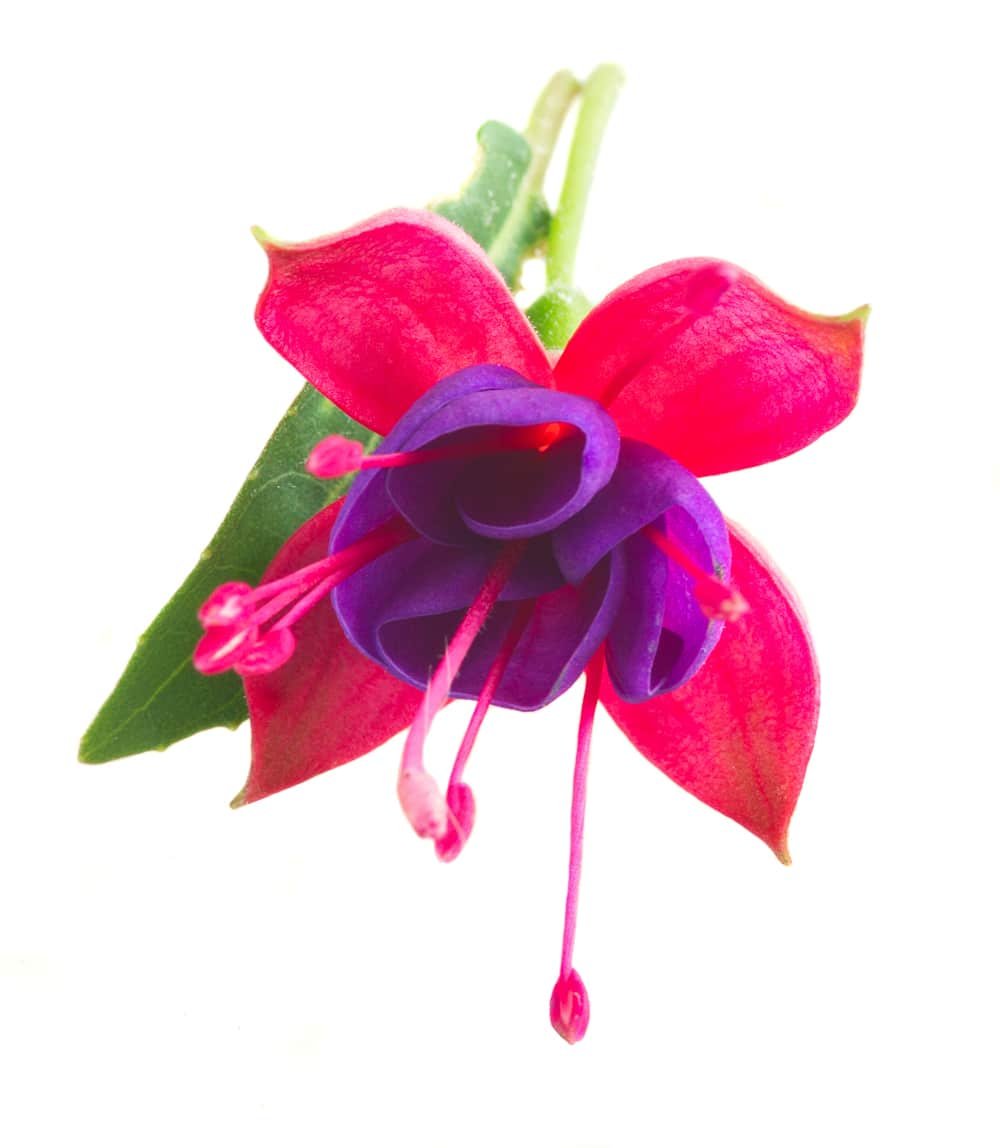
Hollyhocks
Hollyhocks, also known as Alcea, are tall, slender biennial plants prized for their showy blooms and cottage garden charm. With towering heights reaching up to 8 to 9 feet, Hollyhocks produce multi-petaled, rippled flowers in various colors, including white, pink, yellow, and lavender. Their tubular blooms, especially in red, are particularly enticing to hummingbirds, making Hollyhocks a delightful addition to any garden.
- Flower Characteristics: Hollyhocks boast tall, slender stems adorned with multi-petaled rippled flowers that bloom all along the stem. While available in various hues, red hollyhocks are the most appealing to hummingbirds due to their bold color and tubular shape.
- Bloom Period: Hollyhocks typically bloom in the second year, offering flowers from mid-to late summer.
- Growing Conditions: Thriving in full sun and well-draining soil, Hollyhocks prefer sheltered locations to protect them from strong winds. Their towering height makes them ideal for the back of garden beds or borders in cottage-style gardens.
- USDA Growing Zones: 2 to 10
- Invasive/Poisonous: Although Hollyhocks are not invasive, they can spread quickly if left unchecked due to their tendency to self-seed. Additionally, all parts of the plant are toxic if ingested, so caution is essential, especially around kids and pets.
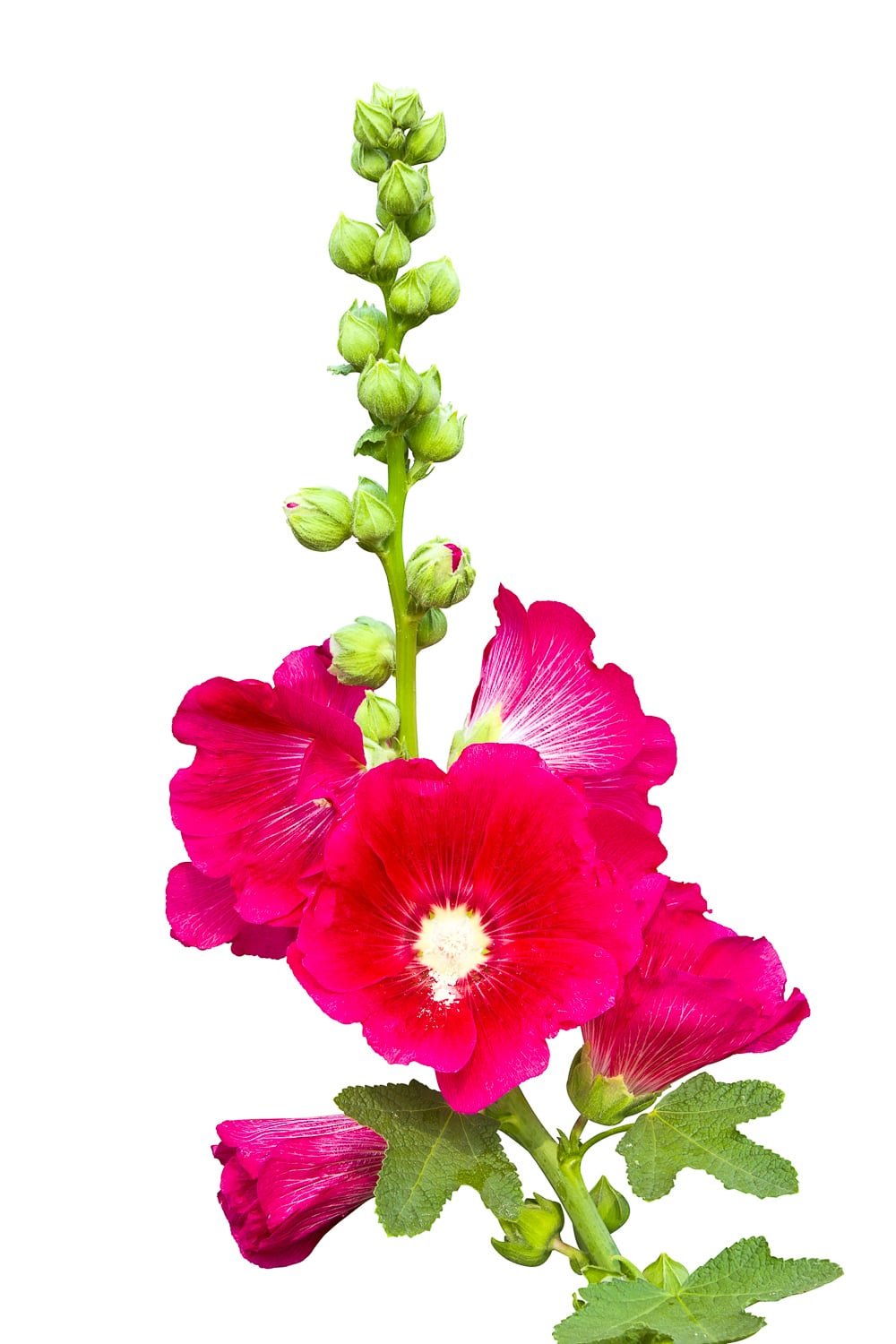
Hosta
Hostas are quintessential shade garden plants appreciated for their lush foliage and occasional spikes of delicate flowers. With small white, pink, or purple flowers, Hostas provide a valuable nectar source for hummingbirds, especially attracted to the tubular flowers rich in nectar.
- Flower Characteristics: Hostas produce small tubular flowers in shades of white, pink, or purple, borne on slender spikes above the foliage. While the flowers may not be the main attraction, they are rich in nectar, attracting hummingbirds and other pollinators.
- Bloom Period: Hostas bloom in mid-summer, offering a subtle yet valuable source of nectar for hummingbirds during the warmer months.
- Growing Conditions: Thriving in full to partial shade and moist, well-draining soil, Hostas are perfect for shade gardens, woodland borders, and under trees. Their lush foliage adds texture and interest to shaded areas of the garden.
- USDA Growing Zones: 3 to 9
- Invasive/Poisonous: Hostas are considered safe for both humans and pets, and they are not known to be invasive. However, some varieties may produce toxic sap that can cause skin irritation in sensitive individuals.
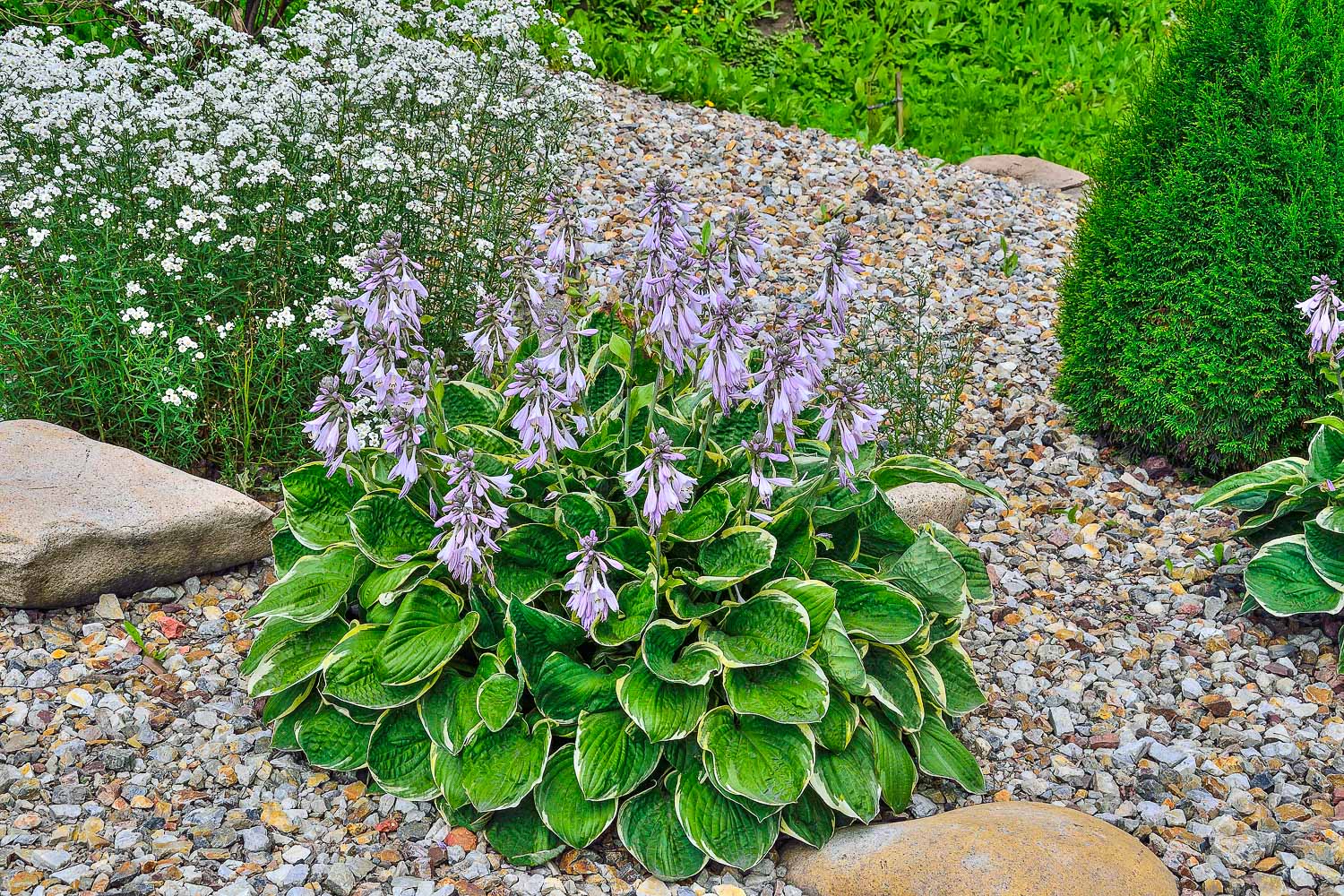
Lilac
Lilacs, scientifically known as Syringa vulgaris, are beloved for their fragrant clusters of flowers and iconic springtime blooms. With their intoxicating scent and early spring blossoms, lilacs provide an essential food source for hummingbirds during the initial stages of the growing season. Plus, lilacs are one of the best smelling flowers to add to your garden hands down, a bonus for you and the hummingbirds.
- Flower Characteristics: Lilacs produce clusters of small, fragrant flowers in shades of purple, pink, white, and lavender. The tubular-shaped flowers, clustered together in showy panicles, attract hummingbirds with their abundant nectar.
- Bloom Period: Lilacs typically bloom in early to mid-spring.
- Growing Conditions: Lilacs thrive in full sun and well-draining soil. They prefer neutral to slightly alkaline soil conditions. They are ideal for cottage gardens, hedges, or standalone specimens, adding beauty and fragrance to any landscape.
- USDA Growing Zones Zones 3 to 7.
- Invasive/Poisonous: Lilacs are not invasive and are generally safe for humans and pets. However, all parts of the plant contain toxins that can cause gastrointestinal discomfort if ingested.

Lupine
Lupins, belonging to the Lupinus x hybrid genus, are North American natives admired for their vibrant spikes of flowers and striking foliage. With blooms in a wide range of colors, including white, pink, red, yellow, blue, purple, and bicolored, Lupines provide a visual feast for both humans and hummingbirds.
- Flower Characteristics: Lupines produce tall spikes of tubular flowers in various colors, making them highly attractive to hummingbirds and other pollinators. The nectar-rich blooms provide a valuable food source for hummingbirds during summer.
- Bloom Period: Lupines bloom from late spring to early summer.
- Growing Conditions: Lupines love full sun and slightly acidic soil with good drainage. They prefer moist conditions but can tolerate some drought once established. They are ideal for perennial borders, sunny woodland settings, or along garden pathways.
- USDA Growing Zones: Zones 4 to 9.
- Invasive/Poisonous: Although Lupines are generally not classified as invasive, it is important to note that certain wild lupine species have the potential to spread rapidly in specific habitats. Additionally, Lupines contain alkaloids that can be toxic if ingested, posing a risk to humans and pets if consumed in large quantities.

Salvia
Salvia, also known as sage, encompasses a diverse group of flowering plants appreciated for their colorful blooms and aromatic foliage. With tall spikes of clustered flowers in various hues, including blue, red, purple, orange, pink, yellow, white, green, and brown, Salvia is a billboard for hummingbirds, attracting them with its abundant nectar.
- Flower Characteristics: Salvia produces tall spikes of clustered flowers in various colors, making them highly attractive to hummingbirds. The tubular-shaped flowers are rich in nectar, providing a vital food source for hummingbirds throughout the flowering season.
- Bloom Period: Salvia blooms from late spring to early fall, offering a prolonged period of flowering that coincides with the peak activity of hummingbirds. Some varieties may continue to bloom sporadically until the first frost.
- Growing Conditions: Once established, all types of sage thrive in full sun and well-draining soil. They prefer dry, warm conditions. Sage is an excellent choice for perennial borders, containers, mass plantings, or mixed flower beds.
- USDA Growing Zones: Zones 5 to 9
- Invasive/Poisonous: Salvia is not commonly invasive, but certain varieties may readily self-seed. Additionally, Salvia is generally safe for humans and pets.

Trumpet Honeysuckle
Trumpet Honeysuckle, also known as Coral Honeysuckle or Woodbine. This native climbing vine is cherished for its fragrant, trumpet-shaped flowers and attractive foliage. With clusters of brightly colored, tubular flowers Trumpet Honeysuckle is a favorite among hummingbirds, attracting them with its abundant nectar.
- Flower Characteristics: Trumpet Honeysuckle produces clusters of tubular, fragrant flowers in shades of red, orange, or yellow. These flowers provide a rich source of nectar for hummingbirds. The vibrant blooms, coupled with their sweet fragrance, make Trumpet Honeysuckle a standout in any garden.
- Bloom Period: Trumpet Honeysuckle blooms from late spring to early fall.
- Growing Conditions: Thriving in full sun to partial shade and rich, well-draining soil, Trumpet Honeysuckle prefers moist conditions but can tolerate some drought once established. It is an excellent option for showcasing its climbing habit on trellises, fences, or arbors.
- USDA Growing Zones: Zones 5 to 9
- Invasive/Poisonous: The Trumpet Honeysuckle plant is definitely noninvasive and poses no risk to humans or pets. However, certain species of honeysuckle may be mildly toxic if ingested in large quantities.
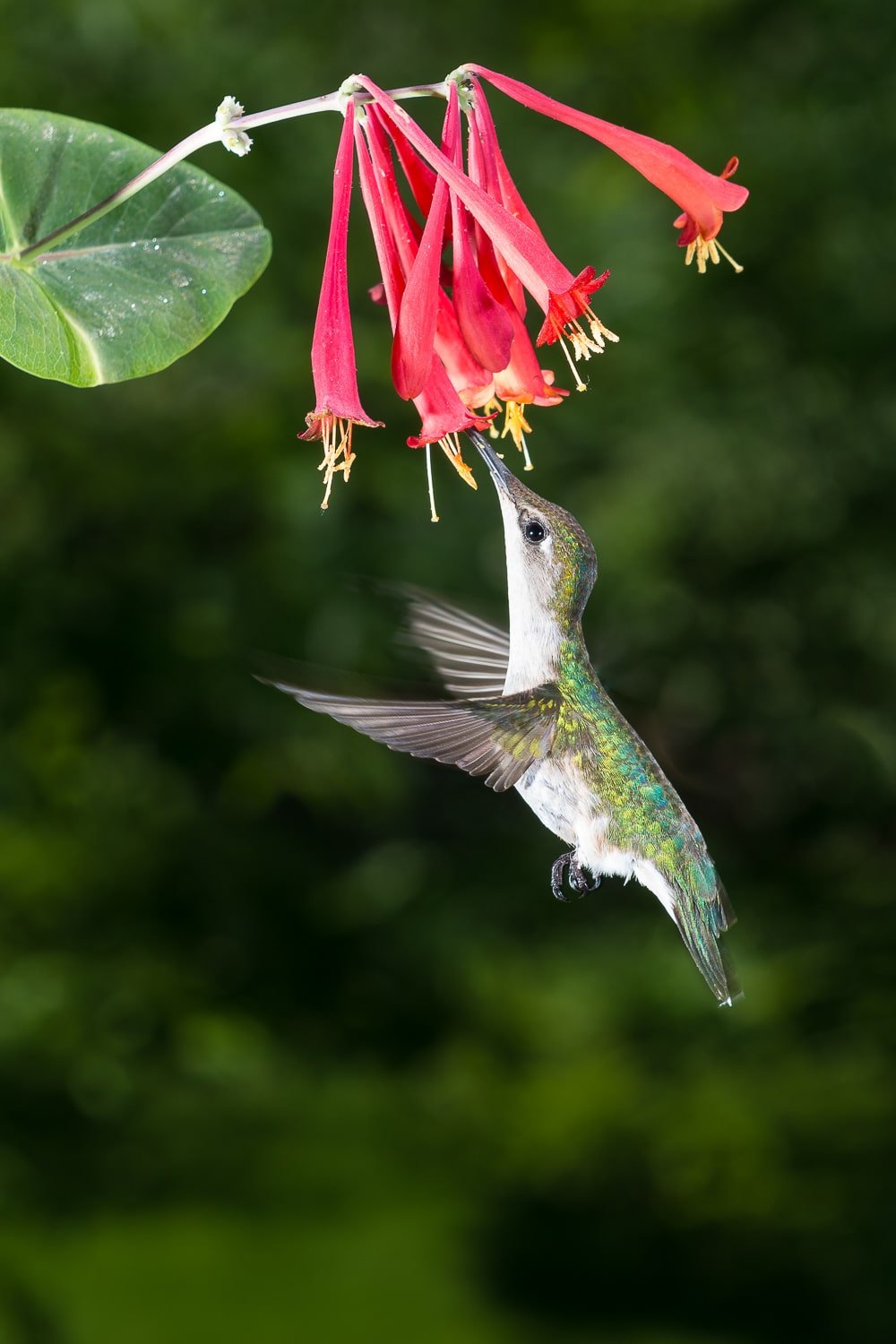
Annual Flowers that Attract Hummingbirds
Impatiens
Impatiens, commonly known as Busy Lizzie or patience plant, are highly regarded annuals prized for their easy maintenance, uniform growth pattern, and stunning blooms. With flowers in shades of white, pink, rose, red, scarlet, violet, salmon, and orange, Impatiens provide a reliable source of nectar for hummingbirds throughout the growing season.
- Flower Characteristics: Impatiens produce large, vibrant flowers in various colors, making them highly attractive to hummingbirds. The abundant blooms and their long-lasting nature ensure a continuous supply of nectar.
- Bloom Period: Impatiens bloom from early summer until fall
- Growing Conditions: Impatiens thrive in partial shade with rich, well-draining soil. Once established, They prefer consistent moisture but can tolerate some drought. They are excellent for mass plantings, hanging baskets, window boxes, and garden beds.
- When to Plant: Impatiens are typically planted after the last frost date in spring, once the soil has warmed up and all danger of frost has passed.
- Invasive/Poisonous: Impatiens are not considered invasive and are generally safe for humans and pets. However, certain species may contain compounds that can cause mild gastrointestinal discomfort if ingested in large quantities.
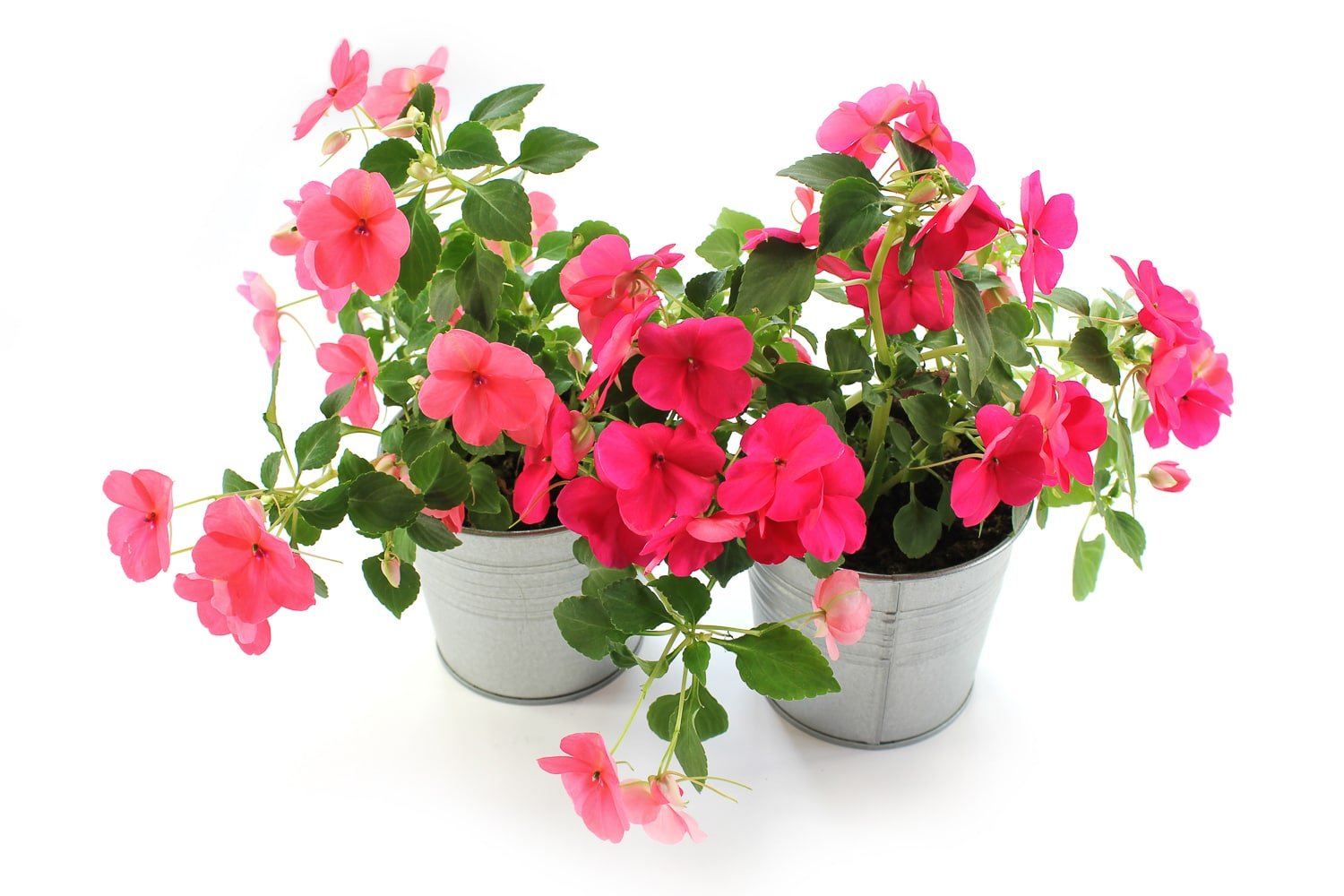
Petunia
Petunias are beloved summer flowers known for their prolific blooms and wide range of colors. With flowers in shades of red, pink, purple, blue, yellow and white, Petunias provide a vibrant display that attracts hummingbirds with their abundant nectar.
- Flower Characteristics: Petunias produce large, trumpet-shaped flowers in various colors, making them highly attractive to hummingbirds. The colorful blooms make Petunias a popular choice for gardeners.
- Bloom Period: Petunias bloom heavily throughout the summer
- Growing Conditions: Petunias thrive in full sun with well-drained soil and prefer regular watering and fertilization to promote vigorous growth and blooming. They are versatile plants suitable for hanging baskets, containers, garden beds, and borders.
- When to Plant: Petunias must be planted only after the final frost date in spring, once the soil has warmed up and there is no danger of frost.
- Invasive/Poisonous: While petunias are generally safe for humans and pets, it’s important to exercise caution. Certain species may contain compounds that can cause mild gastrointestinal discomfort if ingested in large quantities.

Zinnia
Zinnias, vibrant summer annuals, flaunt daisy-like flowers and long-lasting blooms. Hummingbirds favor their abundant nectar and bright colors.
- Flower Characteristics: The plants produce large, colorful blooms, enticing hummingbirds with sturdy stems.
- Bloom Period: Zinnias bloom profusely in summer
- Growing Conditions: Zinnias thrive in full sun and well-drained soil, requiring regular watering and deadheading.
- When to Plant: Seeds or starts are planted after the last frost in spring.
- Invasive/Poisonous: Zinnias are generally safe but may cause mild discomfort if ingested excessively.
Lantana
Lantana, also known as shrub verbena, is a colorful annual prized for its prolific blooms and tolerance to heat and drought. With flowers in vibrant shades of red, orange, yellow, and purple, Lantana is a favorite among hummingbirds, attracting them with its abundant nectar and colorful displays.
- Flower Characteristics: Lantana produces clusters of small, brightly colored flowers in various hues, which make it highly attractive to hummingbirds. The clustered blooms and their sweet fragrance make Lantana a popular choice for garden borders, containers, and hanging baskets.
- Bloom Period: Lantana blooms from late spring to fall
- Growing Conditions: Once established, lantana thrives in full sun with well-drained soil. It prefers hot and dry conditions. This versatile plant suits garden beds, borders, containers, and hanging baskets.
- When to Plant:Plant Lantana confidently in spring, only after the last frost has passed and the soil is sufficiently warm to ensure there is no risk of damage.
- Invasive/Poisonous: Lantana can be invasive in some regions and is toxic to humans and pets if ingested.

Snapdragon
Snapdragons are charming annuals known for their colorful, snap-like flowers and upright growth habit. With red, pink, yellow, and white flowers, Snapdragons attract hummingbirds with their abundant nectar and unique flower shape.
- Flower Characteristics: Snapdragons produce tall spikes of tubular flowers that resemble the jaws of a dragon when gently squeezed, making them highly attractive to hummingbirds. The unique flower shape and vibrant colors make Snapdragons a delightful addition to garden borders, containers, and cut flower arrangements.
- Bloom Period: Snapdragons bloom from late spring to early fall
- Growing Conditions: Thriving in full sun to partial shade with well-drained soil, Snapdragons prefer cooler temperatures and regular watering to promote vigorous growth and blooming. They are versatile plants, suitable for garden beds, borders, containers, and cutting gardens.
- When to Plant: Snapdragons are typically planted in early spring after the last frost date for successful growth, as they prefer cooler temperatures.
- Invasive/Poisonous: Snapdragons are generally safe for humans and pets and are not considered invasive. However, certain species may cause mild gastrointestinal discomfort if ingested in large quantities; therefore, caution should be exercised.

Flowering Tobacco
Flowering Tobacco, also known as Nicotiana, is a fragrant annual prized for its delicate flowers and evening blooms. The flowers attract hummingbirds with their abundant nectar and sweet fragrance. Flowers bloom in shades of white, red, pink, and green.
- Flower Characteristics: Flowering Tobacco produces clusters of tubular flowers that open in the evening, making it highly attractive to hummingbirds. Its delicate appearance and sweet fragrance make it a lovely addition to garden borders, containers, and moonlight plant gardens.
- Bloom Period: Flowering Tobacco blooms from summer to fall.
- Growing Conditions: Nicotania grows best in full sun to partial shade with well-drained soil. It also prefers moderate watering and regular fertilization to promote vigorous growth and blooming. Flowering tobacco is versatile for garden beds, borders, containers, and night-scented gardens.
- When to Plant: Flowering Tobacco should be planted after the last frost date in late spring. The plants require warm temperatures for growth and germination.
- Invasive/Poisonous: Flowering Tobacco is generally considered safe for humans and pets and is not invasive. The plants contain nicotine, which can be toxic if ingested in large quantities.

Seasonal Availability of Nectar-Rich Plants
Hummingbirds rely on a steady supply of nectar throughout the year, and incorporating a variety of flowering plants with staggered blooming periods ensures continuous food sources for these delightful birds. Here’s a breakdown of the best feeding seasons for each plant that attracts hummingbirds:
Spring:
- Bleeding Heart
- Coral Bells
- Columbine
- Foxgloves
- Lilac
- Lupine
- Salvia
Summer:
- Agastache
- Bee Balm
- Butterfly Bush
- Cardinal Flower
- Catmint
- Garden Phlox
- Hardy Fuchsia
- Hosta
- Trumpet Honeysuckle
Fall:
- Late-blooming flowers can provide additional food sources for hummingbirds.
Expert Tips
- Diversify Your Garden: Incorporate a variety of plants that attract hummingbirds to create a diverse and inviting environment. Include perennials and annuals with different colors, shapes, and bloom times to ensure a continuous nectar source.
- Focus on Native Plants: Choose native plants that attract hummingbirds, as they are well-adapted to your local climate and ecosystem. Native plants often provide better nutrition and support for local wildlife.
- Provide Shelter and Perches: Plant trees, shrubs, and trellises in your garden to create sheltered areas where hummingbirds can rest and perch between feeding sessions.
- Maintain a Water Source: Install a birdbath, fountain, or shallow water dish to provide hummingbirds with clean water for drinking and bathing. Keep the water fresh and debris-free to attract more visitors to your garden.
- Avoid Pesticides: Minimize or eliminate the use of pesticides and herbicides in your garden, as these chemicals can harm hummingbirds and other beneficial insects. Opt for natural pest control methods and encourage a healthy balance of predators and prey.
- Plan for Succession Planting: Plan your garden layout to include plants that attract hummingbirds with staggered bloom times. This ensures a continuous supply of nectar throughout the growing season and keeps hummingbirds coming back for more.
- Create Hummingbird-Friendly Habitats: Design your garden to mimic natural habitats that attract hummingbirds, such as meadows, woodlands, and stream banks. Incorporate features like rock piles, brush piles, and native grasses to provide additional shelter and foraging opportunities.
FAQ
Plants such as Agastache, Bee Balm, and Salvia are renowned for attracting hummingbirds due to their tubular flowers, which are rich in nectar. Explore a variety of options to cater to different preferences and garden conditions.
While some plants bloom seasonally, incorporating a diverse selection of flowering plants with staggered bloom times ensures a continuous nectar source for hummingbirds throughout the year. Consider including both perennial and annual blooms for year-round appeal.
If hummingbirds aren’t frequenting your garden, consider factors such as plant selection, placement, and garden maintenance. Patience is key, as it may take time for hummingbirds to discover and become accustomed to new feeding opportunities.
In addition to selecting plants that attract hummingbirds, providing water sources such as birdbaths or misters, offering perches for resting, and minimizing pesticide use are crucial steps to creating a hospitable environment for these birds.
Grab Our Ultimate PRINTABLE Garden Planner
With 39 pages of planning and organizing and the ability to customize your planner with the pages you need, you won’t need another planner for the rest of your gardening life!
$4.99 US

Final Remarks
By incorporating these carefully selected plants into your garden, you attract the delightful presence of hummingbirds and contribute to the ecological balance of your outdoor space. Whether you’re a seasoned gardener or just starting, creating an enchanting haven for these captivating birds is rewarding and beneficial for the biodiversity of your surroundings. So, roll up your sleeves, dig into the soil, and watch your garden come alive with vibrant colors and graceful flights of hummingbirds throughout the seasons.
Join The Conversation
We hope this guide has inspired you to create a hummingbird-friendly garden that not only beautifies your outdoor space but also nurtures these remarkable creatures. Do you have any tips, experiences, or questions on attracting hummingbirds to your garden? Please share your thoughts in the comments section below and join the discussion. Also, don’t forget to spread the love by sharing this article with fellow gardeners on social media. Let’s work together to create thriving habitats for hummingbirds and foster a deeper connection with nature in our gardens.
Related Posts

Author: Laura Kennedy
Writer & Owner of Little Yellow Wheelbarrow
Editor’s Note: This post was originally published on January 15, 2023, and was updated on March 11, 2024. The update included additional information, better formatting, expert tips, and FAQs.










